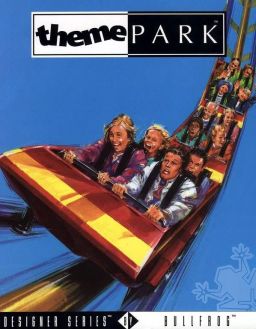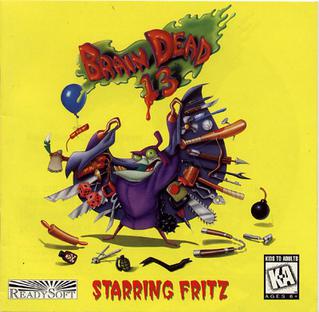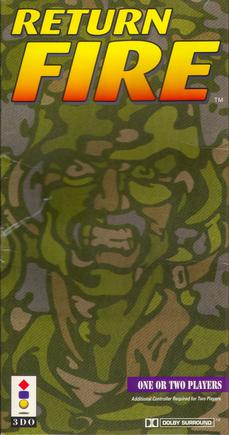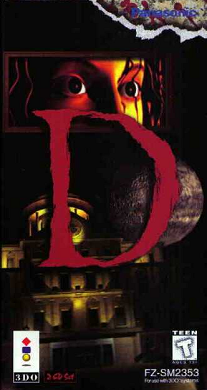
Virtua Fighter is a fighting game created for the Sega Model 1 arcade platform by AM2, a development group within Sega, headed by Yu Suzuki. An early prototype version was location tested in Japan by August 1993, before the complete game was released worldwide in December 1993. It is the first game in the Virtua Fighter series, and the first arcade fighting game to feature fully 3D polygon graphics. The game has been ported to several platforms including the Sega Saturn, Sega 32X, and Microsoft Windows.

The 3DO Interactive Multiplayer, also referred to as simply 3DO, is a home video game console developed by The 3DO Company. Conceived by entrepreneur and Electronic Arts founder Trip Hawkins, the 3DO was not a console manufactured by the company itself, but a set of specifications, originally designed by Dave Needle and RJ Mical of New Technologies Group, that could be licensed by third parties. Panasonic produced the first models in 1993, and further renditions of the hardware were released afterwards by GoldStar, Sanyo, Creative Labs, and Samsung Electronics in 1997.
The fifth generation era refers to computer and video games, video game consoles, and handheld gaming consoles dating from approximately October 4, 1993, to March 23, 2006. For home consoles, the best-selling console was the Sony PlayStation, followed by the Nintendo 64, and then the Sega Saturn. The PlayStation also had a redesigned version, the PSone, which was launched on July 7, 2000.

Theme Park is a construction and management simulation video game developed by Bullfrog Productions and published by Electronic Arts in 1994. The player designs and operates an amusement park, with the goal of making money and creating theme parks worldwide. The game is the first instalment in Bullfrog's Theme series and their Designer Series.

X-Men: Children of the Atom is an arcade game that was produced by Capcom and released on the CP System II arcade hardware in 1994 in Japan and in 1995 in North America and Europe.

Primal Rage is a fighting game developed and released by Atari Games to arcades in 1994. The game takes place on a post-apocalyptic version of Earth called "Urth". Players control one of seven large beasts that battle each other to determine the planet's fate. Matches feature many of the conventions of fighting games from the era, including special moves and gory finishing maneuvers. Ports were released for home consoles and personal computers. Efforts to perfectly emulate the arcade original have been unsuccessful due to the use of an unusual copy protection method. Toys, comics, a novel and other merchandise tie-ins were produced. More than 1.5 million copies of the game were sold.

Alone in the Dark 2 is a 1993 survival horror video game developed and published by Infogrames. It is the second installment in the Alone in the Dark series. It was ported to the PC-98 and FM Towns in 1994 and to the 3DO Interactive Multiplayer in 1995 under the same name, and to the Sega Saturn and PlayStation in 1996 as Alone in the Dark: Jack Is Back in Europe, and renamed as Alone in the Dark: One-Eyed Jack's Revenge in North America.

Brain Dead 13 is an interactive movie video game developed and originally published in North America by ReadySoft on 15 December 1995 and in Europe by Empire Interactive on the same year for MS-DOS. Unlike Dragon's Lair and Space Ace, which began as laserdisc arcade games, it was only released for personal computers and video game consoles. In the game, players assume the role of young computer expert Lance Galahad to defeat Dr. Nero Neurosis at his castle and its residents. Its gameplay is primarily presented through the use of full-motion video (FMV).

Corpse Killer is a horror-themed rail shooter developed and published by Digital Pictures for the Sega CD, Sega CD 32X, 3DO, Sega Saturn, Windows 95 and Macintosh computers. An interactive variation on the zombie film genre, it utilizes live-action full motion video in a format similar to other games developed by Digital Pictures. Reviews for the game were mixed, generally criticizing the repetitive gameplay and low video quality, though many reviewers enjoyed the campy nature of the cutscenes. Corpse Killer was the first CD game released for the Sega 32X. It was later remastered for Steam, PlayStation 4 and Nintendo Switch.

Return Fire is a 1995 video game developed by Silent Software, Inc. for the 3DO Interactive Multiplayer and ported to the PC and PlayStation in 1996. It was preceded by Fire Power (1987) and followed by Return Fire 2 (1998). An expansion pack, Return Fire: Maps O' Death, was released for the 3DO in 1995. Return Fire is a vehicular shooter from a 3D bird's eye view, in which the player's goal is to capture the enemy flag and return with it to their base. It was met with critical acclaim for its unusual gameplay concept, enjoyable multiplayer mode, and classical soundtrack, and is remembered as one of the 3DO's "best games" in its Home of the Underdogs entry.

D is a horror-themed interactive movie and adventure game developed by Warp and directed by Kenji Eno. It was first published by Panasonic for the 3DO Interactive Multiplayer in 1995, later being ported to the Sega Saturn, PlayStation, and MS-DOS. The story follows Laura Harris as she goes to investigate a hospital after learning her father went on a mass murdering spree and barricaded himself inside. The hospital morphs into a castle upon her arrival, which she must explore to find her father. The player controls Laura through computer generated full-motion video (FMV) sequences, and must complete the game within two hours without a save or pause function.

Crime Patrol is a live-action LaserDisc video game released by American Laser Games in 1993. American Laser Games released a sequel, Crime Patrol 2: Drug Wars later that year.

The Need for Speed is a street racing game developed by EA Canada, originally known as Pioneer Productions, and published by Electronic Arts for 3DO in 1994. It allows driving eight licensed sports cars in three point-to-point tracks either with or without a computer opponent. Checkpoints, traffic vehicles, and police pursuits appear in the races.

Creature Shock is a 1994 sci-fi first-person crawler game released for MS-DOS and 3DO. It was developed by Argonaut Software and published by Virgin Interactive Entertainment. The game was later ported to the CD-i, Sega Saturn and PlayStation video game systems.

Gex is a platform game developed by Crystal Dynamics. It was originally released for the 3DO in 1995; ports of the game for the PlayStation and Sega Saturn were later developed by Beam Software, and a Windows version was released by Microsoft. It was a pack-in game for Panasonic models of the 3DO later in the console's life. It is the first in the Gex series of video games, and introduces players to the title character, a wisecracking, television-obsessed gecko voiced by comedian Dana Gould, who must venture through the "Media Dimension" and defeat Rez, the overlord of the dimension who wants to make Gex into his new network mascot.

Star Fighter or Star Fighter 3000 is a 3D flight-based shoot-em-up developed and published by UK company Fendet Software, and released in 1994 for the Acorn Archimedes. The gameplay is mission based and involves elements of strategy and planning. The player can order wingmen to fly in formation and attack specific targets.

Shockwave Assault is a science fiction combat flight simulation video game developed by Advanced Technology Group and published by Electronic Arts for various home video game consoles and PCs. The player takes control of a futuristic fighter plane to defeat extraterrestrial ships and tripods.

FIFA Soccer 96 is a football simulation video game developed by Extended Play Productions and released by Electronic Arts in 1995. It was released for the Mega Drive/Genesis, Sega Saturn, Sega 32X, Game Gear, PlayStation, Super Nintendo Entertainment System, and MS-DOS compatible operating systems.

Road Rash is a 1994 racing and vehicular combat video game originally published by Electronic Arts (EA) for the 3DO Interactive Multiplayer. A version for the Sega CD was developed simultaneously and released in 1995 to act as a "bridge" between the 3DO version and the Sega Genesis title Road Rash 3, and the game was subsequently ported to the PlayStation, Sega Saturn, and Microsoft Windows in 1996. The game is the third installment in the Road Rash series, and is centered around a series of motorcycle races throughout California that the player must win to advance to higher-difficulty races, while engaging in unarmed and armed combat to hinder the other racers.


















